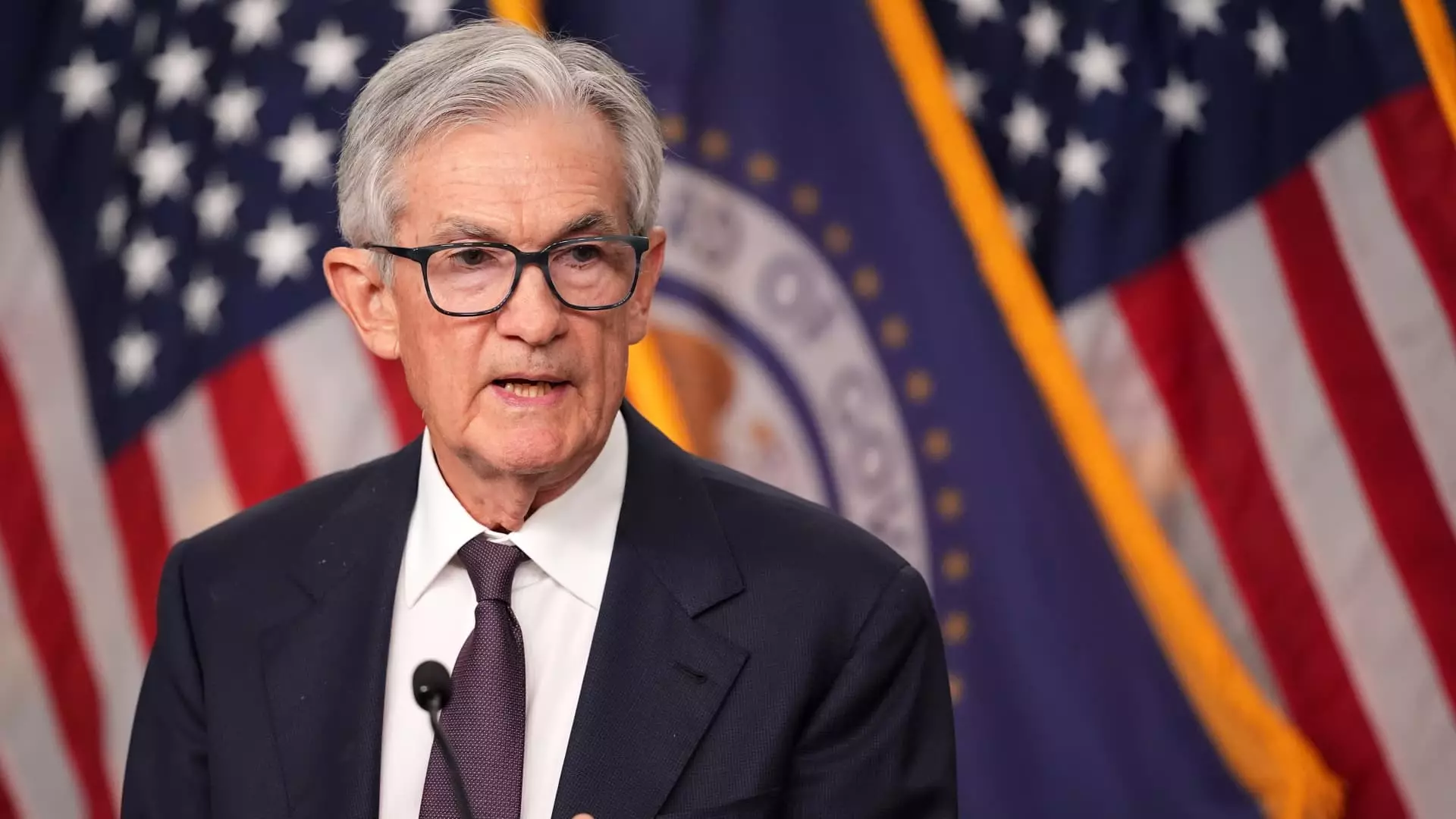The recent Federal Reserve meeting painted a vivid picture of the delicate balancing act facing policymakers. With tariffs, trade tensions, and inflation casting long shadows over the economic landscape, the committee found itself at a crucial crossroads. The minutes revealed a palpable concern among officials about persistent inflation and potential risks to employment and growth. This situation isn’t merely a case of numbers on a spreadsheet; it represents stark realities for everyday Americans, the kind that could shift the political and economic fabric of the nation.
In an environment where economic indicators oscillate wildly, the notion of “business as usual” becomes a farce. Yet, the Fed has opted for a stance of caution, deciding to maintain the federal funds rate between 4.25% and 4.5%. This decision isn’t an indictment of the economy per se—after all, growth remains “solid”—but more a reflection of the internal strife within economic policy frameworks. In essence, the Fed is caught between a rock and a hard place: one side advocating for monetary caution to manage inflation, and the other demanding relief for consumers squeezed by rising prices. The tension is palpable, and it could lead to outcomes that resonate far beyond the financial sector.
Economic Growth Amidst Uncertainty
While the Fed’s officials describe economic growth as robust and the labor market “broadly in balance,” the growing risks cannot be ignored. It’s difficult to believe in statistics celebrating a “solid” economy when many everyday workers continue to feel the pinch. Families stretched thin by rising costs for basic necessities may neither feel nor witness the benefits of GDP growth eagerly trumpeted by policymakers. The very definitions of “balance” and “solid” seem increasingly subjective when viewed through the lens of working-class struggles.
Consider the unique position the Fed has adopted: declaring a strong economy while staring down the complexities of tariffs, trade negotiations, and inflationary pressures. The juxtaposition is troubling, revealing a disconnect between high-level economic decisions and the realities faced by American households. It pushes the narrative that economic indicators alone cannot encapsulate the full picture and raises important questions about the efficacy of the Fed’s policies in catering to diverse populations.
The Role of Fiscal Policy
The ongoing uncertainty surrounding fiscal policy looms as a critical factor in the Fed’s decision-making. While refusing to capitulate to political pressures, as evidenced by Fed Chair Jerome Powell’s adamant stance against external interference, the central bank must grapple with the implications of government policies that seem to shift with every election cycle. It’s a frustrating state of affairs: policymakers lay down potential avenues for economic growth but are frequently blocked by a morass of partisan disagreements that stifle progress.
Tariffs designed to rectify trade imbalances can often lead to unintended consequences, such as restricting consumer access to affordable goods and inflating prices further. The recent thaw in U.S.-China relations—marked by an agreement to suspend onerous tariffs—provides a brief glimmer of hope. However, the long-term impacts are yet to be realized. If reductions in tariffs aren’t achieved in a sustainable manner, supply chains could remain fraught with complications, perpetuating the cycle of inflation.
Looking Ahead: The Quest for Clarity
The Fed has indicated that any decisions to lower interest rates will hinge on improved visibility in fiscal and trade policy frameworks. This cautious approach, while prudent, also embodies a frustrating paralysis. Consumers don’t have the luxury of waiting for clarity—they feel the immediate effects of inflation and can only watch as these bureaucratic deliberations unfold. Will the Fed’s wait-and-see strategy ultimately pray on the economic stability it seeks to preserve, or will it prove to be a calculated move toward recovery?
Ultimately, this is a critical moment for the Federal Reserve as it navigates treacherous waters laden with the potential for both inflationary surges and heightened unemployment risks. The decisions made in these moments will resonate throughout the economy, shaping the lives of tens of millions of Americans. The stakes have never been higher, and the outcome of this balancing act might ultimately reveal whether the Fed is the stabilizing force it claims to be—or just another player in the convoluted web of economic politics.

